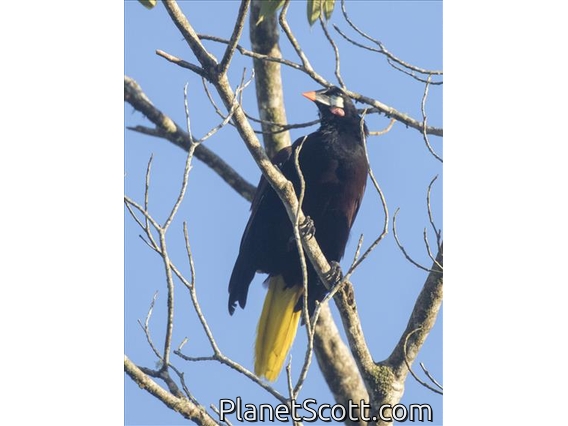Montezuma Oropendola (Psarocolius montezuma)

Montezuma Oropendola (Psarocolius montezuma)

Montezuma Oropendola (Psarocolius montezuma)

Montezuma Oropendola (Gymnostinops montezuma)



×




Montezuma Oropendola (Psarocolius montezuma)

Montezuma Oropendola (Psarocolius montezuma)

Montezuma Oropendola (Gymnostinops montezuma)
About Montezuma Oropendola (Psarocolius montezuma)
- Kingdom: Animals
- Phylum: Chordates
- Class: Birds
- Order: Perching Birds
- Family: American Blackbirds and Orioles
The Montezuma oropendola is a New World tropical icterid bird. It is a resident breeder in the Caribbean coastal lowlands from southeastern Mexico to central Panama, but is absent from El Salvador and southern Guatemala. It also occurs on the Pacific slope of Nicaragua and Honduras and northwestern and southwestern Costa Rica. It is among the oropendola species sometimes separated in the genus Gymnostinops. The English and scientific names of this species commemorate the Aztec emperor Moctezuma II.
Source: Wikipedia
Lifelists
Visits
-
2007-10-10
La Mancha, Mexico -
2007-10-12
Jalcomulco, Mexico -
2007-10-15
Huatusco - Rancho el Mirador, Mexico -
-
2009-02-08
Lancetilla Botanical Gardens, Honduras -
-
-
-
-
-
-
-






